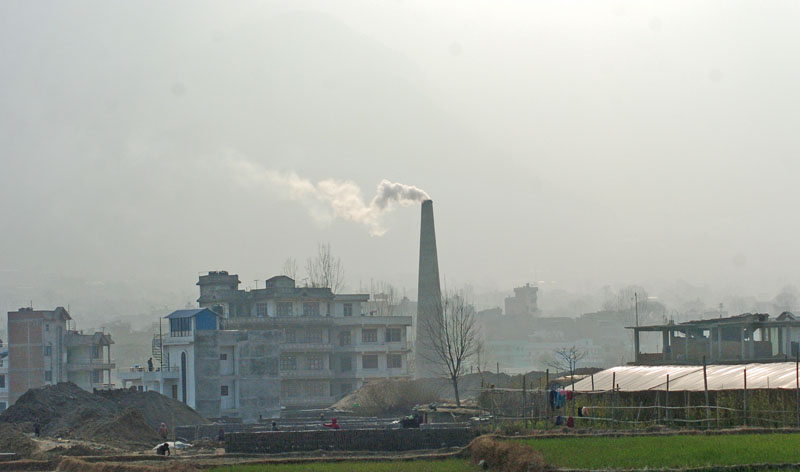Air pollution levels higher in Bhaktapur than in Kathmandu
Kathmandu, May 21
If a report is something to go by, Bhaktapur is more polluted than Kathmandu in terms of ambient air quality.
Bhaktapur is home to over 120 brick kilns registered and operating under Bhaktapur Cottage and Small industries. A recent report of Leaders Nepal shows that air in Bhaktapur has become much polluted due to the brick kilns.
An e-sampler machine has been installed at Putalisadak, Kathmandu, Siddhi Memorial Hospital, Bhaktapur, and Panchkhal, Sindhupalchowk to measure the levels of air pollution in various cities.
In the month of Baisakh, the average pollution level in Bhaktapur was recorded to be 83 microgram per cubic meter, and in Kathmandu the pollution level was recorded to be 63 microgram per cubic meter.
The National Ambient Air Quality Standard has set a standard of 40 microgram per cubic meter to protect public health. However, frequent rainfalls in this season has caused pollution levels to decline.
Leaders Nepal, under the guidance of the health programme, has been consistently recording 2.5 micrograms per cubic meter of fine dust particles in the air for the past 10 years. The study said pollution levels were recorded to be drastically lower during the blockade when brick kilns were shut (up to 2.5 to 52 micrograms per cubic meter) as opposed to when the factories were running (153 micrograms per cubic meter).
Dhiraj Pokharel, general secretary of Leaders Nepal, blames the polluted air flowing from Kathmandu to Bhaktapur for the high levels of pollution there. Air flows from Balaju through Pokhrel added, “Another reason for pollution is low chimney hoods in factories today. The earthquakes last year destroyed all high chimney hoods, and only small ones remain functional.”
The report also said that the amount of pollution is high in the morning, rising from 6:00 am, and falling from 12:00 pm onwards. This information is worrisome as most children go to school and are out in the open at this time.
Dr Amod Pokhrel, a professor of University of California, said, “The main source of pollution is the use of partially burnt wood and coal as fuel, and smoke from vehicles that run on petrol and diesel.” Air pollution has a stronger impact on the health of young children and the elderly. Health issues such as respiratory problems, high blood pressure, and eye infection can arise due to pollution.
A report by the World Health Organisation stated that air pollution can also affect children’s minds and have a negative impact on their thinking capacity.






